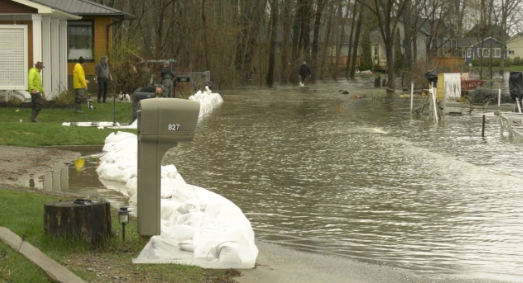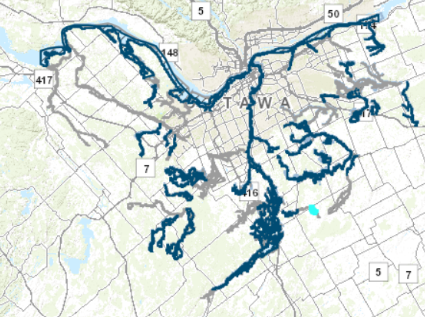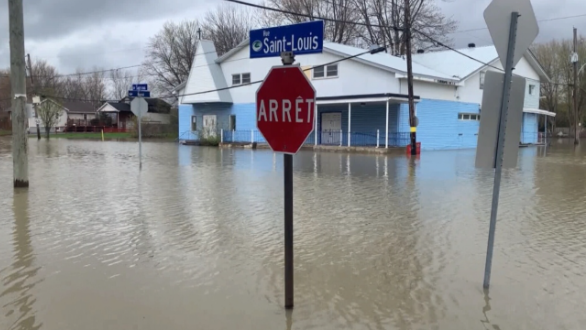
Sandbags protect properties at Sand Pointe in McNab/Braeside. The Ottawa River is expected to peak in the area later this week (Dylan Dyson/CTV News Ottawa)
Kara Brulotte • Posted: 05-05-2023
Climate, Environment, Community
Spring flooding is a reality that Ottawa faces each year, with a growing intensity. Many people are forced to use sandbags to stop rising water, deal with flooding basements and even evacuate their homes each year. But why is this a regular part of Ottawa springs, and what can be done to ameliorate or even prevent these extreme weather events?
Ottawa flooding isn’t really restricted to the Ottawa urban area. Rather, it refers to the banks of the Ottawa river between Arnprior to Hawkesbury, which is around 150 km of affected area. More flood prone locations such as Britannia, Cumberland, Rockland, Hawkesbury, and Constance Bay are at an even higher risk, according to a statement from the City of Ottawa. A flood plain map released by the City of Ottawa shows land at risk of flooding, with the dark blue being representative of a 1 in 50 flood and the grey being representative of a 1 in 100 flood.

Interactive Flood Plain Map (City of Ottawa)
Flooding has many different effects, both minor and major. There are three types of flooding, the one occurring in Ottawa is river flooding, where water exceeds its channel due to high levels of snow melt and/or rainfall. It can cause erosion and destabilize portions of land, contaminate water supplies, damage infrastructure, and pose a threat to human life. Outside of the human cost, it can destroy habitats. However, floods are extremely important to the environment. River overflow is a natural phenomenon, replenishing groundwater and bringing new life to wetlands, according to the Natural Geographic. The problem comes with urban development in flood plains. Many developers avoid building in common flood plains and areas where floods occur less frequently aren’t viewed with as much concern.
There is also the issue of increased precipitation caused by climate change. According to the City of Ottawa, annual average precipitation is increasinging, as well as becoming more unpredictable. This has led to extreme flooding in the past few years, such as 2017, record levels in 2019, 2022, and currently. In a future where high and irregular precipitation is becoming the norm, Ottawa and other flood prone areas must adapt. But what is there to do?

Flooding on rue Saint-Louis in Gatineau. May 2, 2023. (Jackie Perez/CTV News Ottawa)
There are many ways to deal with flooding, both short term and long term. When it comes to dealing with the floods, there are many methods currently in use in the Ottawa area, such as sandbagging to control the spread of water, and the building of emergency stations to provide water, food, and shelter to those forced to evacuate. There are also longer term solutions, such as building flood resistant housing in at-risk areas, halting development on flood plains, and educating people about the danger of living on flood plains and the increasing risk of yearly floods. Flooding isn’t going anywhere, being the most common natural disaster in our country according to the Government of Canada, and it will only grow worse with increasing precipitation. It’s important now more than ever to become educated on the subject, and to grow accustomed to this new flooding reality.
